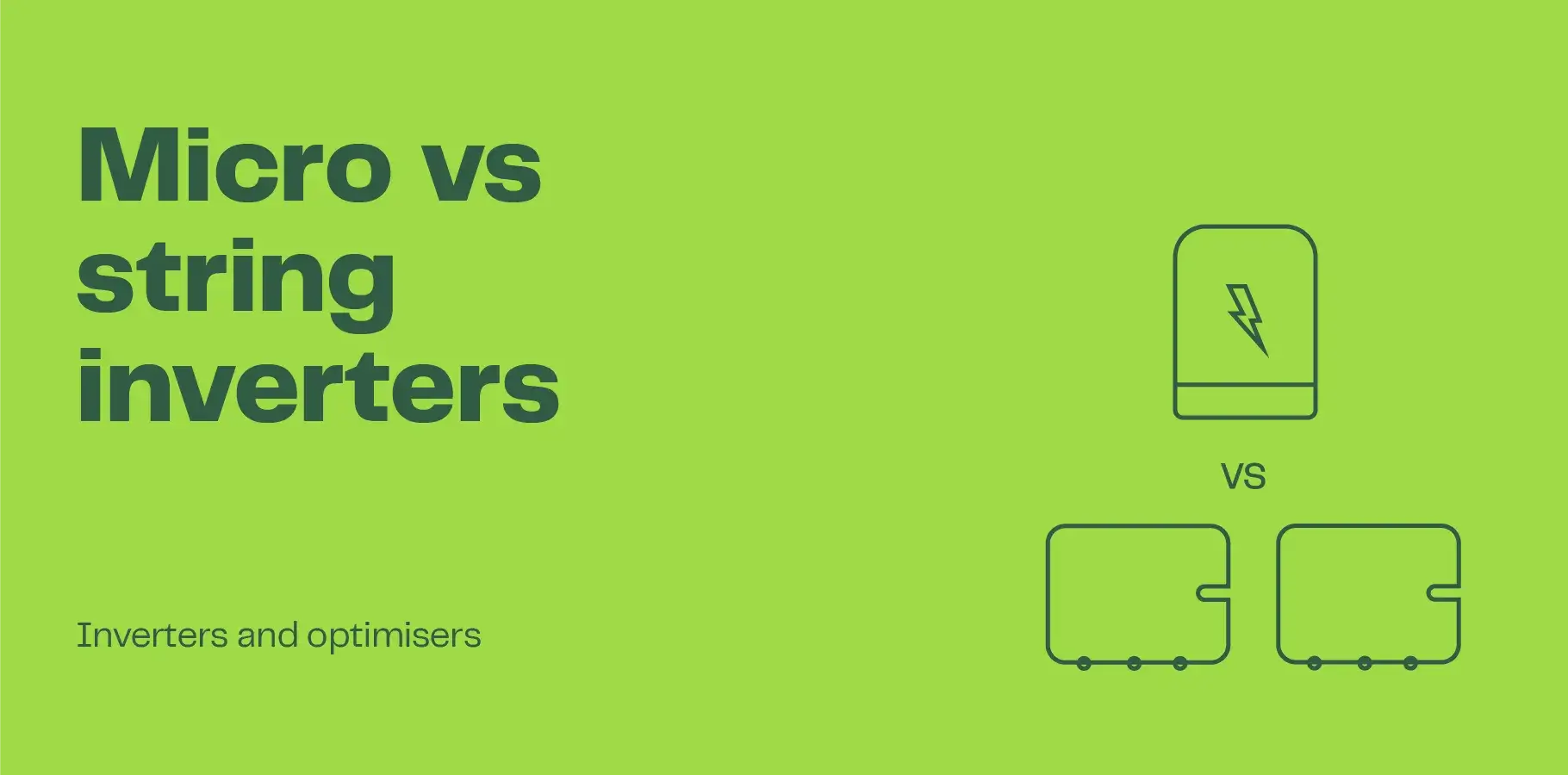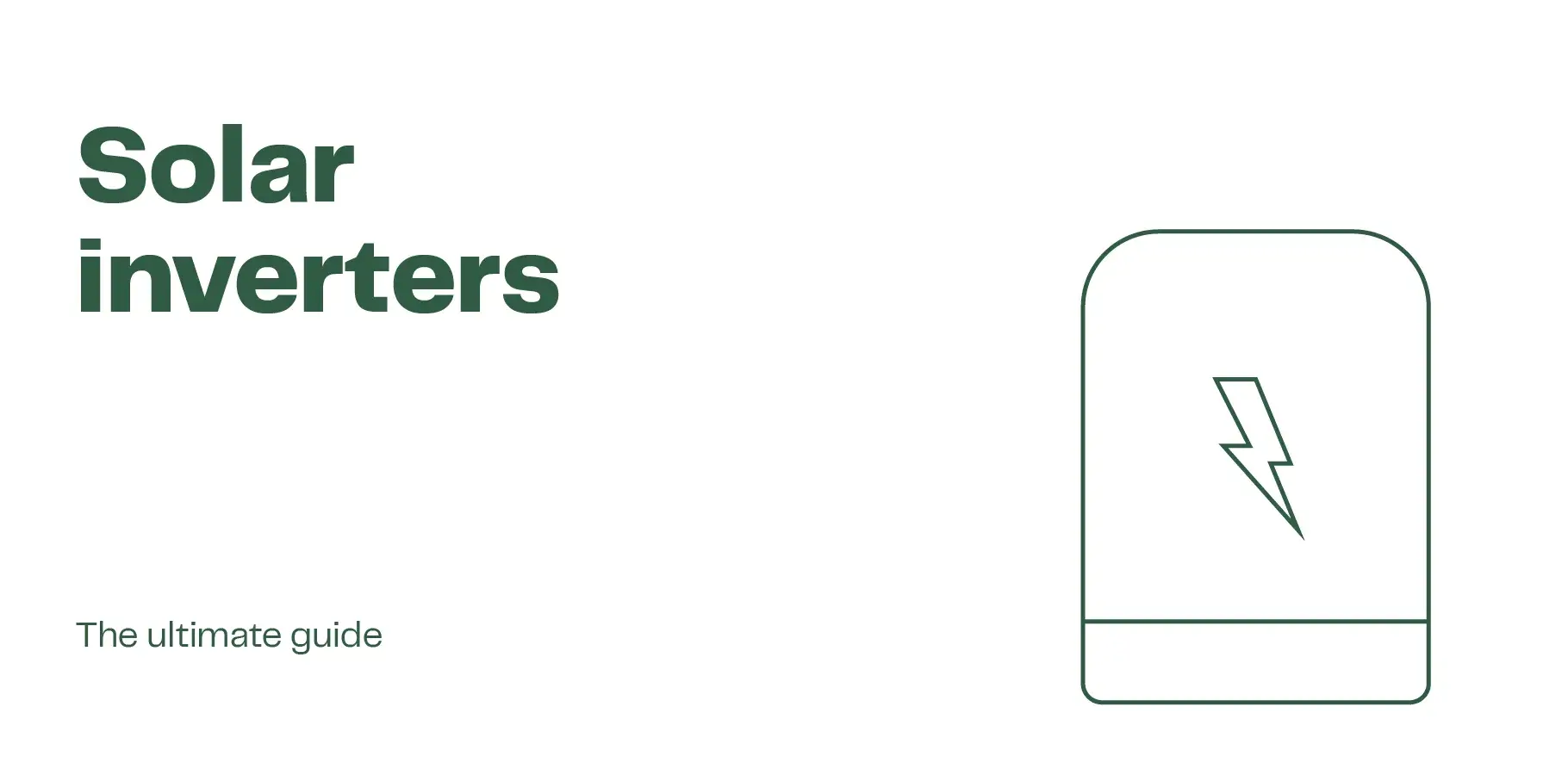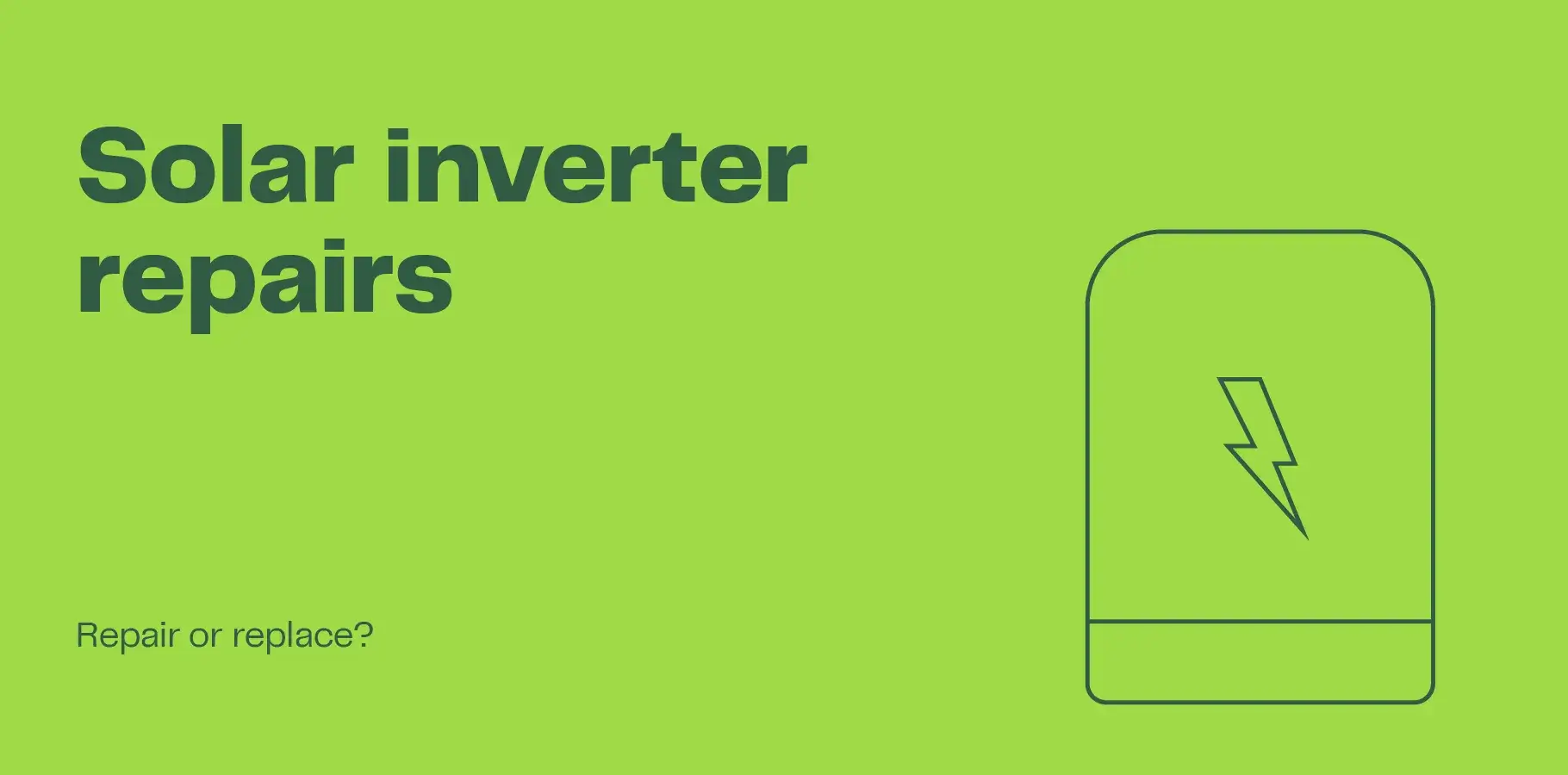We explain the differences, advantages and disadvantages of micro inverters, string inverters and solar optimisers. Importantly, we tell how you can determine which option is the best for your solar power installation.
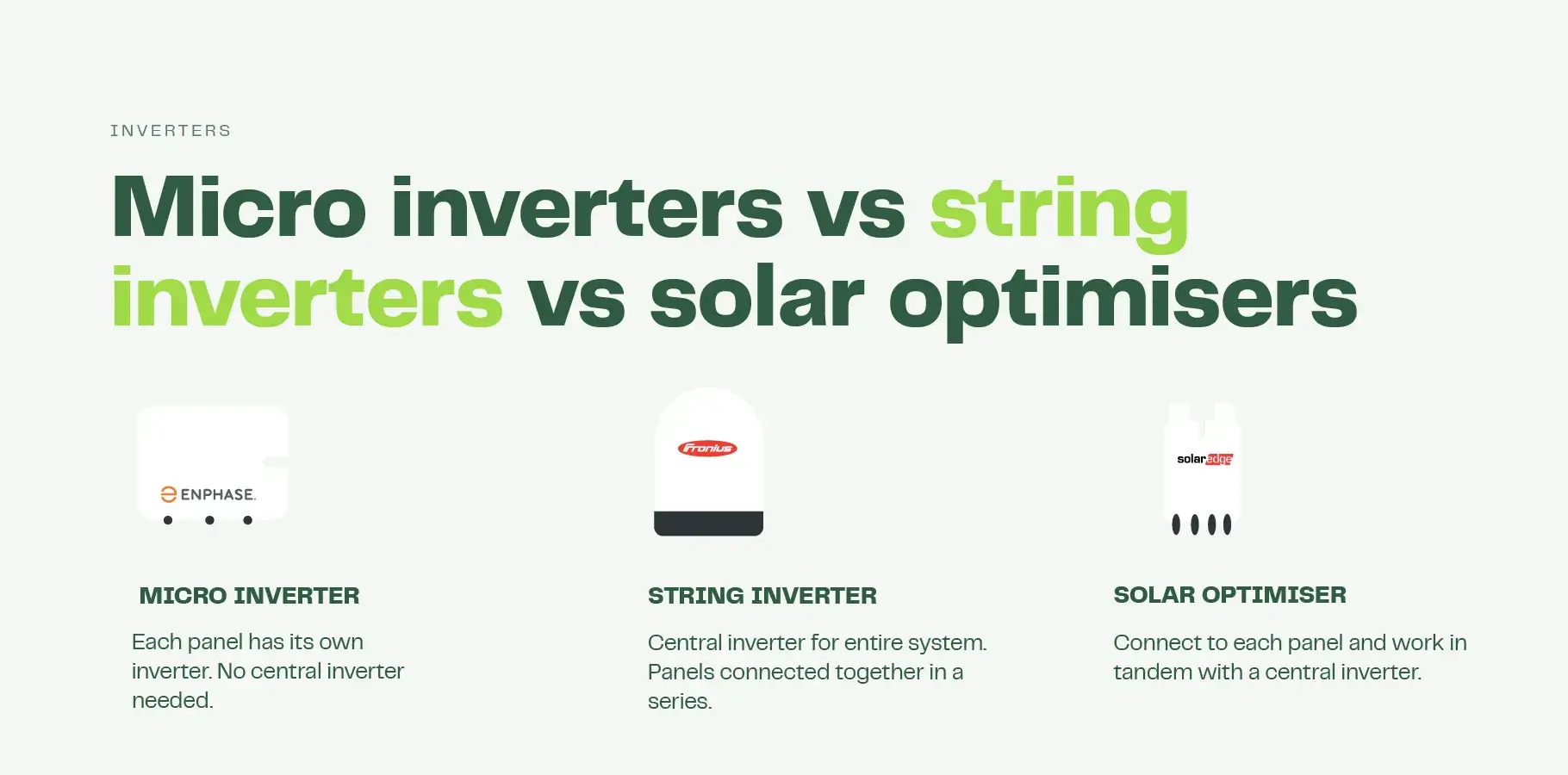
Before we can compare each of the three alternatives, let’s recap how each one works.
Micro inverters and string inverters operate differently
How a string inverter works
A string inverter is one central inverter that is commonly used for standard solar power installs. Panels are connected together in a series, if one panels underperforms due to some form of obstruction, the output of the entire series is affected.

How micro inverters and optimisers work
Micro inverters and DC optimisers attach to each individual panel. They allow each module to operate independent of one another, so in the case of an underperforming panel, the production of the entire system is not adversely affected.
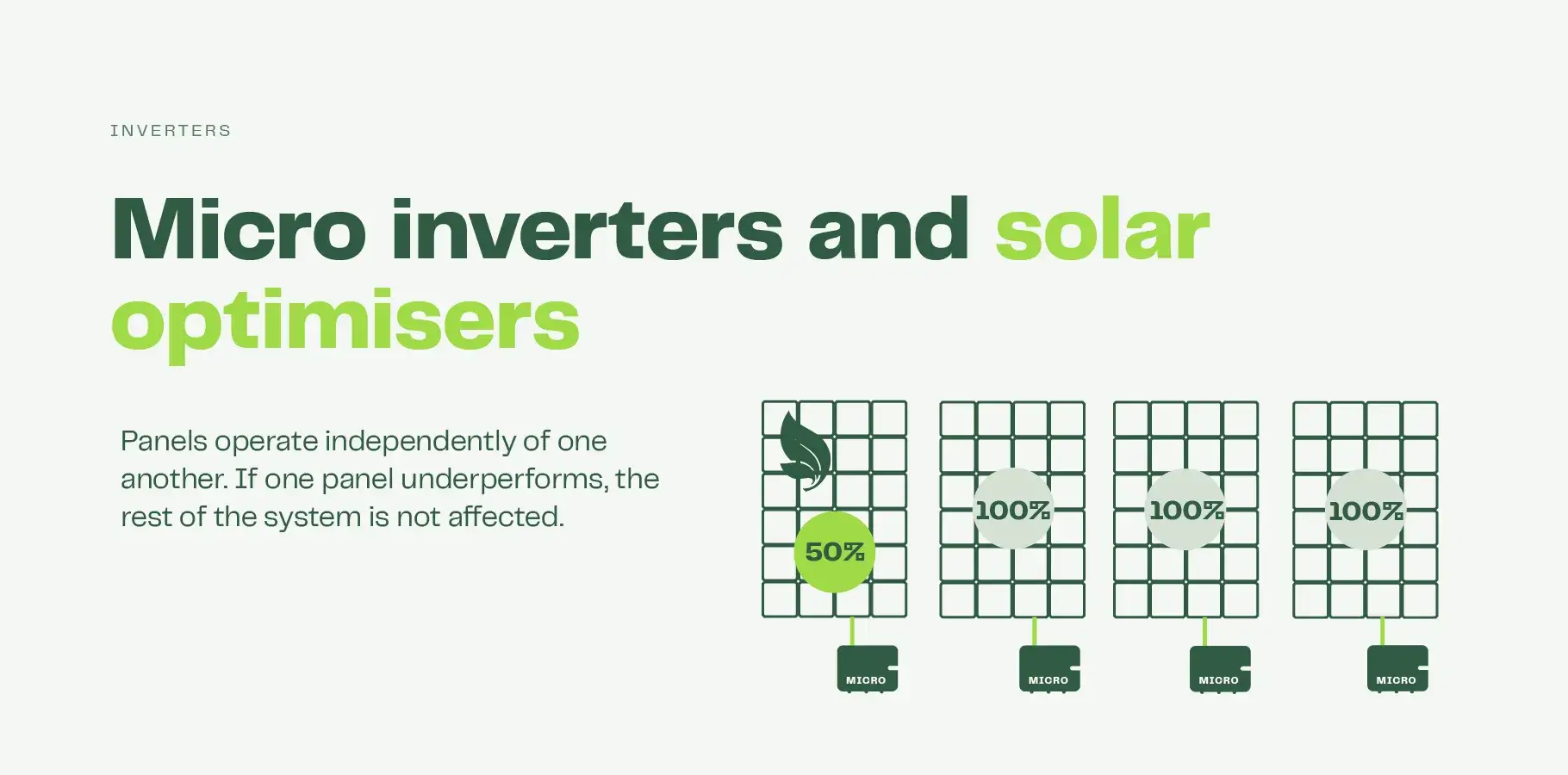
Solar optimisers work much the same as micro inverters, only they are not a solar inverter as such and instead they work in tandem with a central (string) inverter.
Micro inverter vs string inverter comparison
We compare the pros and cons of a micro inverter vs a string inverter in the table below:
Micro inverter vs string inverter
| Micro inverters | String inverters | Optimisers | |
|---|---|---|---|
| Cost: | High | Low – medium | High |
| Efficiency: | High | Average | High |
| Shade performance: | Good | Poor | Good |
| System failure risk: | Low | Average | Average |
| Multi-orientation installs: | Yes | No | Yes |
| Voltage (safety): | Low | High | High |
| Lifespan: | Up to 20 years | 8 – 12 years | 8 – 12 years |
| Monitoring: | Panel level | System level | Panel level |
| Susceptibility to weather: | Average | Good | Good |
| Expandability: | Yes | No | Yes |
Cost
Micro inverters and optimisers cost up to 20 – 25% more than standard string inverters. Solar panel optimisers are marginally cheaper than micro inverters.
Efficiency
Both micro inverters and DC optimisers are, on average, up to 8% more efficient than a string inverter. The difference is mainly due to panel mismatch; when a module underperforms due to soiling, power tolerance differences, temperature differences or defects.
Shade performance
Micro inverters and optimisers far outperform string inverters when solar panels are subject to shading.
System failure risk
If there is an issue with a string inverter, or a power optimiser, it can bring down the entire system. Whereas a micro inverter panel system is far less likely to fail completely; even if one micro inverter fails, the others can continue operating at full production.
Multi-orientation installs
String inverters can only support single orientation installs. If you need to position your panels on different orientations eg. East and west, you’ll need micro inverters or optimisers.
Safety and voltage
Micro inverters operate at a much lower voltage than both a string inverter and power optimisers. A lower voltage means there is less risk of a fire and therefore micro inverters are considered safer.
Lifespan
A typical string inverter has a lifespan of between 8 – 12 years. Optimisers are more likely to last closer to 12 years but micro inverters will typically last up to 20 years.
Easily expandable
It is far easier to expand upon a micro inverter system than it is a string inverter system, even if it has DC optimisers.
Susceptibility to weather
String inverters typically sit vertically on an external wall and do not cop the full brunt of the weather. Both micro inverters and optimisers are positioned on the panels and therefore are more susceptible to the elements.
Which inverter type is best?
The inverter solution that is best for you depends on the specifics of your property install, your preference for quality and your budget.
When a string inverter is your best option
A string inverter is your best option if:
- Your install is straight-forward
- You have no shading issues
- You have a large north facing roof
- You are budget minded
When a micro inverter is a better solution
A micro inverter system, or solar optimisers, are beneficial when:
- You have a complicated install
- Your rooftop is subjected to shading issues
- You need to install panels on different orientations
- You want to maximise your solar production
Micro inverters vs solar optimisers
Little separates micro inverters and solar panel optimisers. Micro inverters run at lower voltage, are less likely to result in full system failure, but they are slightly more expensive.
One key advantage solar optimisers have over micro inverters is that they do not need to be installed on every panel. They can be a less expensive alternative in shading conditions, as you may only need to install them on panels that are likely to be obstructed.
